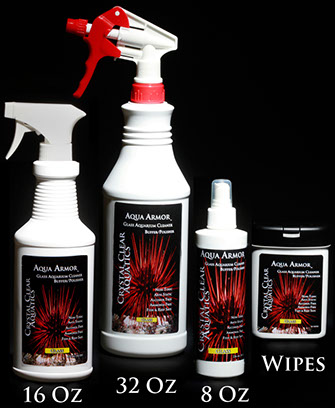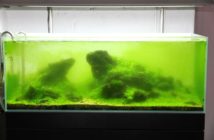Airborne contaminants are quit possibly the most overlooked toxin source for many aquarists. Toxins can come from a wide range of sources including common household cleaning products, remodeling activities such as painting or resurfacing hardwood floors and even common pest control products. I’ve sometimes wondered what would happen if a roach (AKA Palmetto bug for those of you from South Carolina) made it’s way into the aquarium after ingesting or trampling though pesticides used to treat insect problems. Over the years, I have occasionally had to remove a Palmetto bug from an aquarium – it does happen. Hopefully, the pesticides would be diluted enough by the aquarium water volume to not cause any real concerns, but it does get you thinking about the possibility of an issue.
You may not be able to do anything about the occasional floating bug, but you can control other potential toxin exposures. When cleaning up around your aquarium, for example, be extra careful with household cleaning chemicals. Products such as spray bottles of glass cleaner may seem harmless, but airborne chemicals can settle on the waters surface or through the air intake on your protein skimmer. Protein skimmers suck ambient air into into your aquarium 24/7 which means they can also introduce airborne toxins into the aquarium if we are not careful. Windex, for example, contains ammonia and other harmful chemicals, so introducing them into your aquarium accidentally could potentially wreck havoc on your aquarium inhabitants. Even in trace amounts, ammonia can lead to algae outbreaks over time. Instead of spray bottle chemicals, try using water to clean the outside of the glass. If you must use a glass cleaner, spray it onto a cloth in a completely different room and carefully clean the aquarium. Or better still, Crystal Clear Aquatics makes a reef safe acrylic and glass cleaner called Aqua Armor that comes in a liquid spray bottle as well as a lint free cloth wipe. Darrion the owner of CCA tells us it’s completely reef safe and the product contains no alcohol or harsh chemicals.
Other Cleaning Products to lookout For:
- Aerosol cleaning products such as glass, wood, and oven cleaners.
- Underarm deodorant
- Suntan Lotion (a big no-no)
- Perfume and Cologne
- Plug-In Air Fresheners
Home Improvement/Remodeling:
- Paint fumes
- Airborne dust from sanding and cutting wood
- Wood Staining
Airborne dust is typically less dangerous to the system than toxins but they can contribute to increased PO4 levels which can cause unwanted algae problems. If you are remodeling then try and cover the aquarium with a thin layer of plastic to help keep dust out of the aquarium until the dust settles and can be removed from the home or business. We also recommend turning off the skimmer for this period of time during construction. Remember, turning off the skimmer for a day or two is safer than not turning it off during construction. Also, it’s a very good idea to make sure you replace the activated carbon (see article on activated carbon use) and/or chemi-pure or a bio-poly-filter during the remodeling process.
Lastly, if you have a maid/maid service or a pest control service, make absolutely sure that EVERYONE who enters your home or business is properly trained on what and what-not to do in and around your aquarium room.







